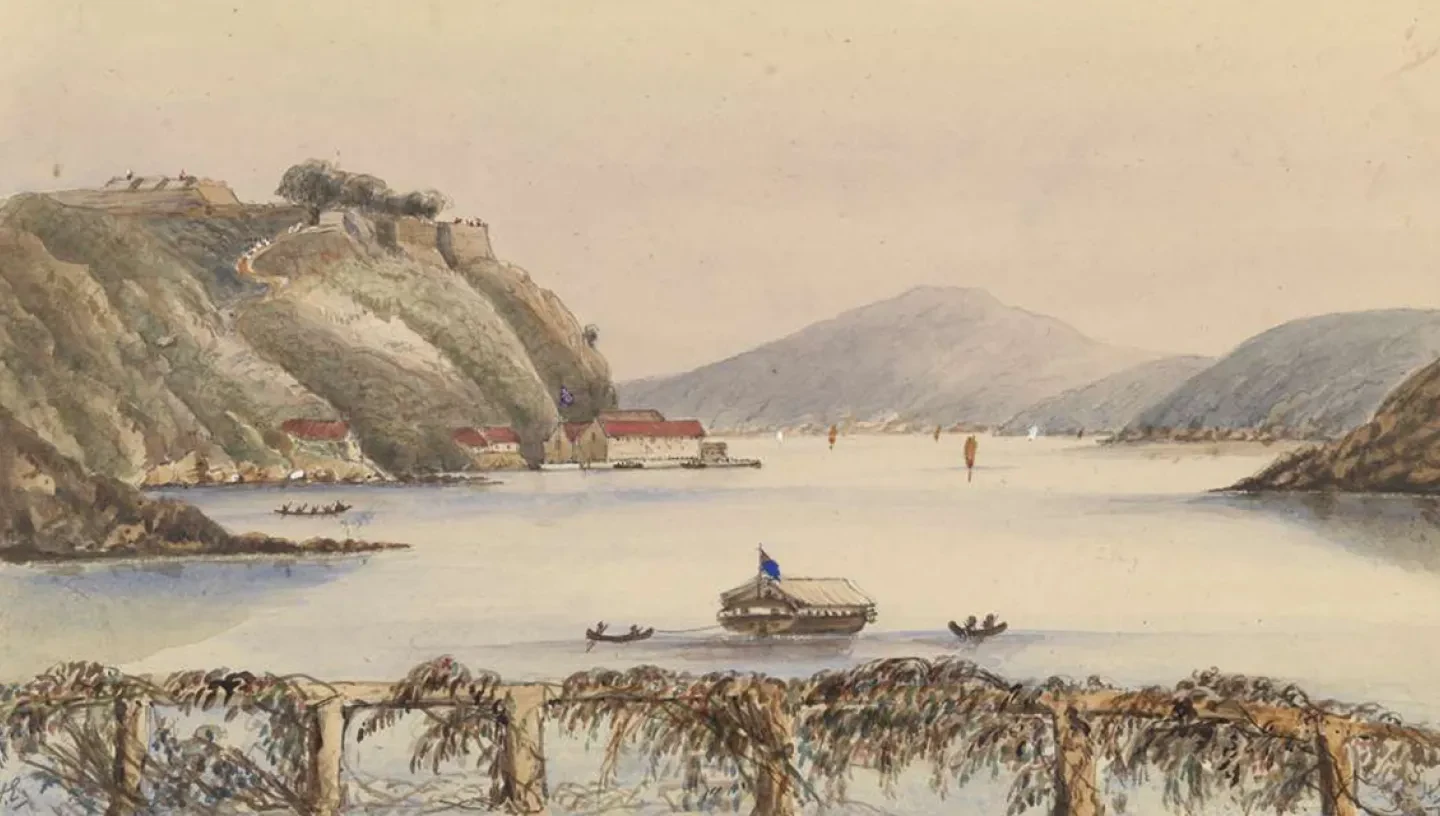
The personal diary of a Royal Navy commander's wife offers a striking insight into the lives of the British ruling classes in 1920s India and Sri Lanka.
In May 1929 the then Rear-Admiral Eric Fullerton was appointed Commander-in-Chief of the East Indies Station, responsible for the Royal Navy's operations in the Indian Ocean.
Lady Dorothy Sybil Fullerton was Eric's wife, and accompanied him to the station’s HQ in Trincomalee, Sri Lanka.
During her husband's posting Fullerton travelled by ship around the Bay of Bengal and the Indian Ocean, keeping a diary as she went. There are four of these diaries in total, held at the Caird Library and Archive in the National Maritime Museum.
Together, the diaries provide an interesting insight into the worldview of the British ruling class at the Empire’s zenith.
By Ember Taylor, Archivist, Acquisitions and Research
The early entries in Lady Fullerton’s first diary document her voyage from London to Kolkata between November and December 1929.
Fullerton departed London on 15 November on the SS Mooltan. On 26 November, while passing Crete, she dined with the Maharaja and Maharani of Alwar, reaching Port Said at the entrance to the Suez Canal on 27 November.
On 4 December, while crossing the Arabian Sea, she attended ‘a lovely fancy dress party’, earning a prize of a box of chocolates for winning the egg and spoon race.

Her diary records her arrival in Bombay (modern day Mumbai) on 6 December, where ‘all the native [people] changed from their European clothes to their Indian ones’.
Fullerton was not impressed by the city.
‘Bombay is a most unattractive place no charm at first sight whatsoever, & we are lucky the Admiralty House here no longer belongs to the station’.
From Mumbai she travelled to Colombo on the west coast of Sri Lanka. Here she visited the town, noting the ‘excellent shops’ and ‘most attractive’ rickshaws, ‘the first time I’ve seen one in ordinary use’.
On 12 December Eric and Dorothy arrived in Trincomalee Sri Lanka's east coast, where the official residence of the Commander-in-Chief of the East Indies Station was located.
Here, at Admiralty House, would be the Fullertons' permanent residence while Eric was in post.
Dorothy Fullerton was enchanted by the harbour: ‘wonderful with lovely green jungle all round’, and described Admiralty House, situated just on the harbour’s edge, as a ‘perfectly delightful place’, with lawn tennis courts and a bathing pool fenced off from the sea ‘to keep the sharks and jellyfish out’.

The interior of the house was lavishly decorated, ‘spacious and airy … a very cool house’. The bedrooms opened onto a wide veranda overlooking the harbour on which were ‘delightful old cane seated mahogany beds on which we rest in the day time.'
'They have mattresses on them & make splendid beds at night when it gets too hot for sleeping inside one’s room,’ she wrote. At the bottom of the page is an annotation: ‘We slept entirely on our verandas’.

On 20 December the Fullertons left Trincomalee for Kolkata, arriving at the mouth of the Hooghly River on the 22 December, with Dorothy remarking on the ‘picturesque looking Lascars.’
Here Eric and Dorothy were on official duty, staying at Government House and meeting the Maharaja of Jodhpur, the Maharani of Cooch Behar, the Raja of Bhutan, and the former Prime Minister of Nepal.
There is a hint of the volatile political climate; Fullerton notes that, ‘We went in 3 government cars & there were over 1000 police lining the road as they feared some trouble’, but her attention quickly moves on to the diplomatic entertainment:
‘The garden was full of real flowers as well as imitation ones. Birds perched about everywhere. Some fireworks were let off. We then went indoors & to an upstairs room where 2 girls gave Indian dances & sang some English songs, Tipperary, Katie, etc! Cakes, champagne, tea, biscuits were handed [round] continuously.’

The picture Fullerton paints of her travels is idyllic, perhaps even oblivious. Even allowing for British understatement, there is little hint of the rising political tension that within decades would culminate in the political independence of every country she passed through.
At the same time as the Fullertons are visiting India in December 1929, the Indian National Congress is agreeing the 'Purna Swaraj' declaration, explicitly declaring self-rule as a political objective.
Fullerton would continue her travels, visiting Myanmar, East Africa and China, filling up four diaries in total. You can view these yourself at the Caird Library and Archive, where they are held under reference MSS/83/010.
